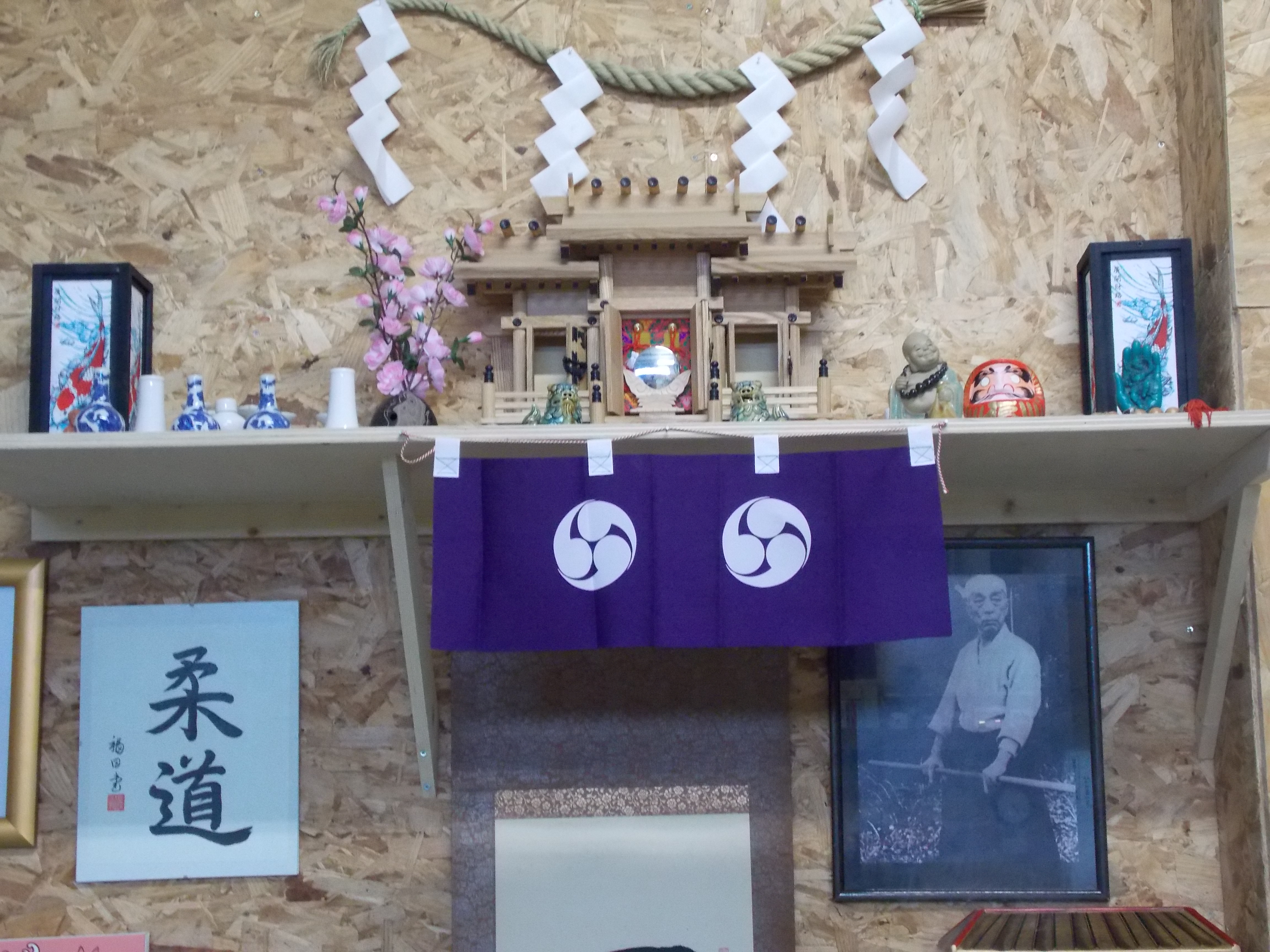THE TRADITIONAL DOJO
We all dream of travelling to an uncharted part of the mountains in Japan, following a rocky path lit by lanterns to a hidden pagoda, where an ageless grandmaster of some mysterious martial art will happily grant a total stranger all the secrets of his art, preferably in a couple of weeks , for no charge.
It comes as a bit of a shock then, when you follow directions down some industrial wasteland to a hut in the middle of a scrap yard, but in Japan this is much more likely, or a garage, university hall or backyard will suffice in most cases.
Very few Ryu (schools) in Japan can afford a dojo as we in the west would like to think of one. Those that do generally have plenty of foreign students to subsidise it, or it has passed through many generations of the same family and is on their own land.
So what are we looking for in a traditional dojo? Obviously martial arts have different requirements depending on their style.
Arts such as karate or kendo require space and a good sprung floor, judo or other similar arts will require tatami mats, although gym mats are the norm, even in Japan these days.
If I may, I will describe my dojo, although not a perfect example, we try to maintain links with the traditions of a past that is not ours, so mistakes will be made and compromises met.
On entering a dojo, the opposite wall to the entrance is a Shomen, this is where the kamiza, (spirit seat) resides, usually it is the north or east wall.
The kamidana, is a shelf on which a Shinzen, or spirit house sits, it contains an o-fuda , or power plaque blessed in the name of Amateratsu, without this it is an empty house. Either side of this are Sasaki clippings to represent nature, offerings of rice, salt and water are placed in Shingu, or white pots as well.
In most Ninpo (ninja) dojo, an odd number of candles may be paced on the shelf, normally five, to represent, light, the elements etc.
Other items may be placed on the shelf, although it is not allowed to place weapons, or photographs of teachers directly on the shelf, they can be placed on either side.
A Shimenawa, a rice straw rope, with white paper “lightning“ strips, define the area as sacred, it is most impolite to put your bags or clothes near it , or walk directly across it without acknowledgement to the kami, or spirit that resides there.
Dependant on the art practiced, weapons are stacked on Kake racks high around the walls, as are Menkyo diplomas photographs etc., as most dojo are small, this prevents students knocking into them.
In most dojo, Nafuda, or rank plaques, are hung around the wall with the names of current Yudansha on them, they move around the dojo as they rise in rank.
By far, the most important part of any dojo is the students, not the quantity, or even quality, but the loyalty and desire for the dojo to survive and thrive is paramount.
If we take a traditional dojo in Japan, students are nearly always introduced by existing members, no flyers, special discount coupons, or recruitment drives in the shopping mall.
It is hard to imagine in the west, students giving free time to clean and decorate the dojo annually on New Year’s Day and then pay a years’ fees.
In Japan this is expected, they then give a demonstration to family and friends. This is their recruiting drive and keeps the school going for another year. It is not unusual for students to have done this for decades, a little different to turning up at a council sports hall when you feel like it and expect the instructor to welcome you like a long lost son

